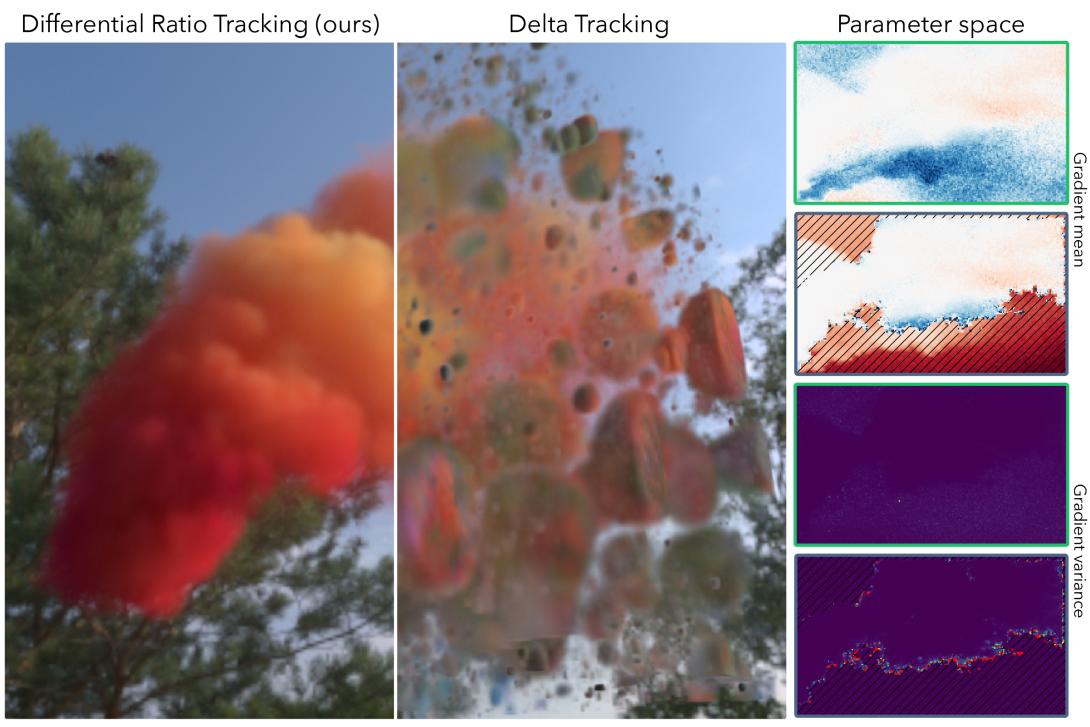Unbiased Inverse Volume Rendering With Differential Trackers

Volumetric representations are popular in inverse rendering because they have a simple parameterization, are smoothly varying, and transparently handle topology changes. However, incorporating the full volumetric transport of light is costly and challenging, often leading practitioners to implement simplified models, such as purely emissive and absorbing volumes with "baked" lighting. One such challenge is the efficient estimation of the gradients of the volume's appearance with respect to its scattering and absorption parameters. We show that the straightforward approach—differentiating a volumetric free-flight sampler—can lead to biased and high-variance gradients, hindering optimization. Instead, we propose using a new sampling strategy: differential ratio tracking, which is unbiased, yields low-variance gradients, and runs in linear time. Differential ratio tracking combines ratio tracking and reservoir sampling to estimate gradients by sampling distances proportional to the unweighted transmittance rather than the usual extinction-weighted transmittance. In addition, we observe local minima when optimizing scattering parameters to reproduce dense volumes or surfaces. We show that these local minima can be overcome by bootstrapping the optimization from nonphysical emissive volumes that are easily optimized.
Publication Date
Published in
Uploaded Files
Copyright
© 2022 Copyright held by the owner/author(s). Publication rights licensed to ACM.
